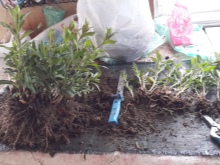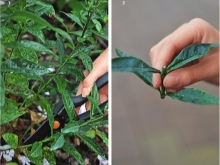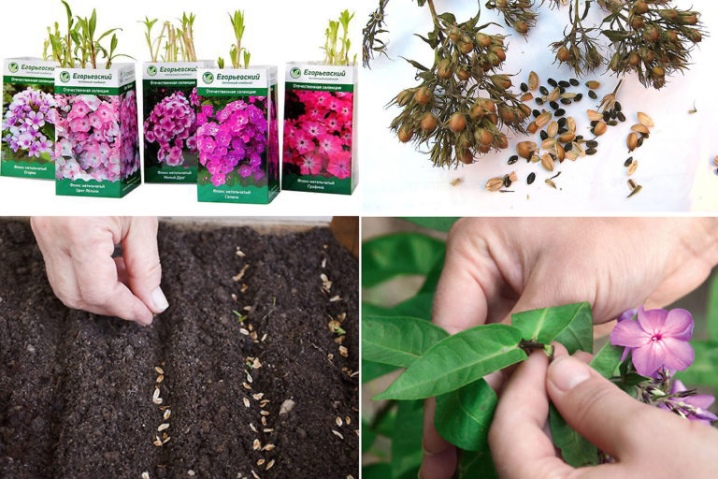Phlox "Tatiana": description, planting, care and reproduction

Phlox is deservedly considered one of the most beautiful and popular garden flowers. They attract gardeners with a large variety of varieties, long flowering and a wide range of colors. The "Tatiana" variety of phlox will become a wonderful decoration of the garden.


Description
Phlox "Tatiana" - perennial, belongs to the group of paniculate phlox. Tall compact bush, grows within 80-90 cm. The stems are straight, the leaves are dark green - in the form of an elongated oval.
The flowering period is long, from July to September. The inflorescences are large enough, cylindrical in shape, the diameter of each flower is 4-5 cm. The flowers are bisexual, with five petals, are formed gradually.
From the moment the first flowers appear, new buds bloom weekly. Their white-pink color is very delicate. In the center, at the base, there is a crimson ring that enhances the charm.
The sweetish aroma of phlox is attractive to bees and butterflies, which flock to feast on nectar during the period of abundant flowering. After the end of the flowering period, seed pods appear. The variety is frost-resistant and rarely susceptible to disease.

Seat selection
It is best to plant the variety in partial shade or under the crowns of deciduous trees, where the lighting will be diffused. In the summer heat, the trees will protect phloxes from the active influence of the sun's rays, and in strong wind and rain they will protect them from breaking off the stems. Open, sunny places are not very well suited for the Tatiana variety, since the flowers are prone to fading.

Landing rules
Planting phlox is permissible in spring and autumn. But still, the optimal time for planting paniculate varieties is spring, since the remaining soil moisture after the snow melts contributes to faster rooting. The variety is resistant to temperature changes and is not afraid of spring frosts.
A more suitable time for planting is April and early May. You can also plant at a later date (at the end of May - mid-June), but it should be borne in mind that the flowering period in the first season after planting will be shorter, since the plant will bloom later (not earlier than August).
It is preferable to plant a perennial on moist loamy soil, with fertilization. The soil for planting should be prepared in advance.

In the fall, the site is dug up with the addition of humus, you can also add a small amount of lime.
In the spring, the flower bed should be dug up again and the holes should be made. Their depth should be 25-35 cm. Since the variety is tall, when planting several specimens, it is necessary to leave a distance of 50-60 cm between the holes.
Compost is placed at the bottom of each hole and 20-30 g of complex mineral fertilizer is added. Then it is watered abundantly. The bush is buried about 4 cm in the ground and compacted with soil.
In one place, the variety can grow up to 10 years. However, it is better to transplant every 5 years so that the varietal characteristics of phlox are not lost.



Care
The Tatiana variety, like all phlox, prefers a sufficient amount of moisture and fertilizers. Their lack leads to the formation of small inflorescences, rapid shedding of leaves and petals.

Watering
It is advisable to water in the evening - so the evaporation of moisture will be slower. Water must be poured at the root, per 1 sq. m landings will require about 2 buckets. Water for irrigation should be collected in advance so that it warms up under the sun's rays.Watering with cold water can negatively affect the stems - they can crack and the bush will lose its shape.
To maintain moisture in a hot summer, it is advisable to mulch the soil under the bushes. For this, compost, humus or grass cuttings are suitable. A layer of 6-7 cm is enough.
After watering, the soil must be loosened periodically. Weeds in a flower bed must be removed in a timely manner so that it does not oppress flower plantings.

Fertilization
Feed flowers should be done at least 3 times per season.
- When forming young shoots, the plant needs nitrogen-containing fertilizers. You can pour mullein infusion or herbal infusion (nettle is better).
- During the second feeding, during the budding and flowering period, it is advisable to add potassium sulfate (10 g per 10 l of water) or add ash. It can be poured directly under the bush in a dry form (1 handful), but it is better to dilute it in a volume: 1 glass per 10 liter bucket of water.
- For the period of seed boll formation (when the flowering time ends), there are 3 additional fertilizing. The plant should be fed with phosphorus-potassium mixtures (15-20 g of superphosphate and 10 g of potassium sulfate per 10 l of water).



Preparing for winter
At the end of October-November, when cold weather is established, it is necessary to prune the stems of paniculate phlox. You can cut it at the root, but it is better to leave 1-3 cm from the ground. The stems and soil around the bush must be treated with fungicides to prevent disease. Copper sulfate is well suited for these purposes. The cut stems are burned.
The variety tolerates wintering well in the open field, but if there is a likelihood of severe frosts in the region, it will be useful to cover it with a layer of spruce branches, straw or peat.

Reproduction
There are 3 ways of breeding phlox varieties "Tatiana".
Dividing the bush
Dividing a bush is the simplest and most successful method. It is held in spring or autumn. In spring, division can be carried out immediately after the snow melts, and in autumn - in September.
An overgrown bush is selected and dug out, gently shaking off the ground from the roots. You need to divide it into parts so that 2-3 stems remain on each division. For the procedure, it is better to use a knife or a pointed shovel.
The resulting delenki should be immediately planted in the prepared holes. Bushes planted in spring will bloom in summer, and those planted in autumn will give flowers next spring.



Reproduction by layering
This method, like the previous one, is not difficult. In June, the bush for subsequent reproduction is sprinkled or sprinkled on the lower part of the stems with fertile soil and watered vigorously. Roots appear on the parts of the shoots buried in the ground. At the end of August, shoots with roots are carefully cut off and planted in a new place.



Seed method
It is not the main method of reproduction, as it requires some effort. In addition, with improper storage of seeds, varietal characteristics may slightly change.
In autumn, when the seed pods acquire a brown hue, they should be removed and brought into the heat. When they are dry, they are placed in a container of sand and taken out onto the veranda (or other unheated room).
It is better to sow seeds in March (one month before transplanting into open ground). For a faster emergence of sprouts, the sowing should be superficial (not sprinkling with earth on top).

To plant seeds, you need a plastic container with holes in the bottom and ready-made flower soil.
After sowing the seeds, they are watered with a sprayer and covered with plastic wrap. Every day, the film is removed for a short time, removing condensation. After about 7-10 days, the first shoots appear, and then the covering with the film must be stopped. If there are two leaves, the seedlings are transplanted into separate cups (dive). Seedlings are planted in a permanent place in May.



Phlox "Tatiana" will undoubtedly add a gentle charm to the garden. Subject to the simple rules of maintenance and care, it will delight with its flowering and fragrance for many seasons.
How to properly care for perennial phlox, see below.







































































































The comment was sent successfully.